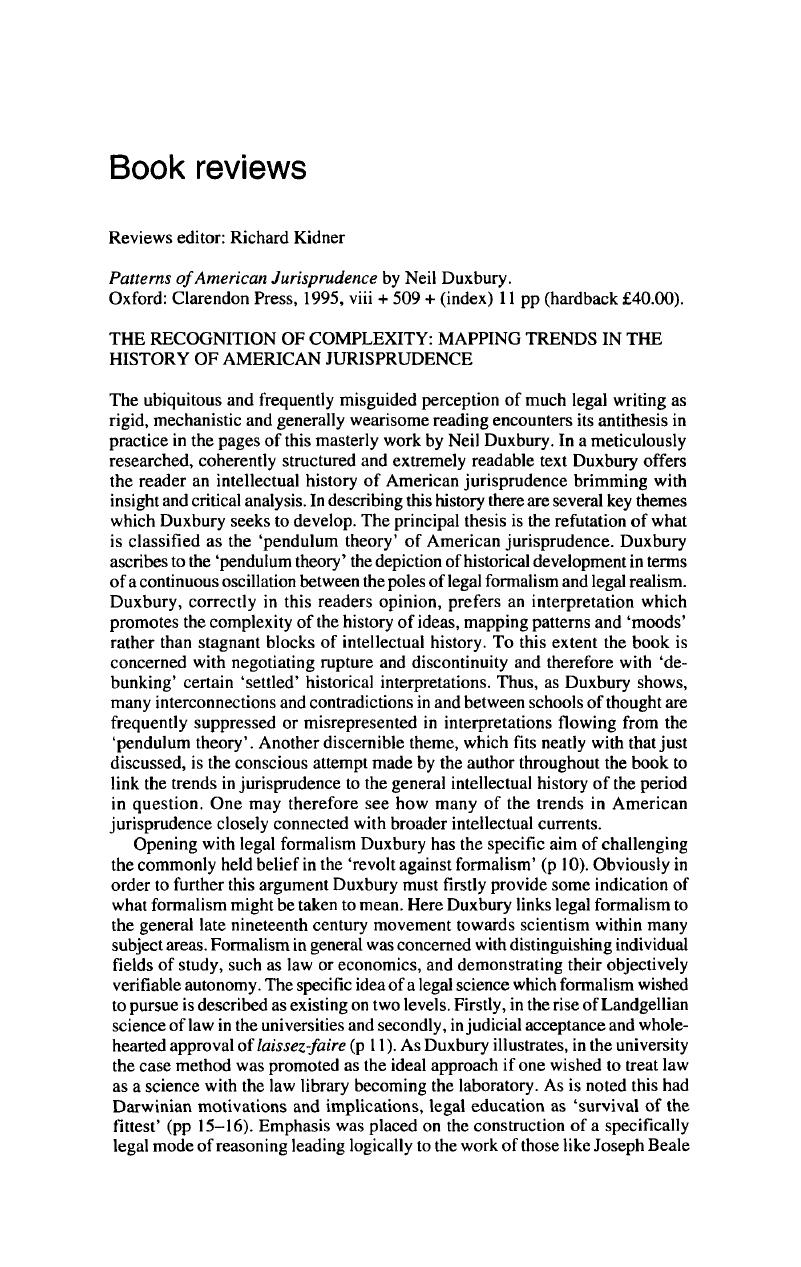No CrossRef data available.
Article contents
Patterns of American Jurisprudence by Neil Duxbury. Oxford: Clarendon Press, 1995, viii + 509 + (index) 11 pp (hardback £40.00).
Published online by Cambridge University Press: 02 January 2018
Abstract

- Type
- Book Review
- Information
- Copyright
- Copyright © Society of Legal Scholars 1996
References
1. Cf S Fish There's No Such Thing As Free Speech … And It's a Good Thing Too (1994) at pp 210–211. He argues that what the realists were doing was simply replacing one form of essentialism with another. ‘Given the realist insistence on the unavoidability of bias and on the value laden nature of all human activities, the recourse to a brute fact level of uninterpretative data seems, to say the least, questionable’. Fish here pinpoints the difficulty facing all post-realist jurisprudence, which Duxbury also continually highlights, in attempting to reconcile their approaches with the ‘reality’ of value-choice.
2. This noted failure to integrate law and social science in an adequate way is a theme which runs throughout Duxbury's interpretation of the history of American jurisprudence.
3. R Cotterell ‘Judicial Review and Legal Theory’ in G Richardson and H Genn (eds), Administrative Law and Government Action: The Courts and Alternative Mechanisms of Review, (1994) p 13, at p 15.
4. J Habermas The Theory of Communicative Action, Vol2 (1981) pp 293, 391–396; S White The Recent Work of Jurgen Habermas: Reason, Justice and Modernity (1988) pp 107–1 15; D Ingrarn Habermas and the Dialectic of Reason (1987) pp 115–134.
5. This is a familiar criticism of liberalism. The reply of liberal theorists is frequently that any such ‘overcoming’ is neither possible or desirable. Cf R Rorty Contingency, Irony and Solidarity (1989) p 68; I Berlin The Crooked Timber of Humanity (1990) ch 1, p 15.
6. In the British context see C Noms ‘Law, Deconstruction and the Resistance to Theory’ 15 Journal of Law and Society (1988) p 166. He offers some convincing explanations for the popularity of deconstruction among some legal scholars. 6a. For an analysis of this criticism of deconstruction see C Douzinas and R Warrington, ‘Justice Miscarried: Ethics, Aesthetics and Law’ (1994) pp 5–7.
7. Cf P Williams The Alchemy of Race and Rights (1993) pp 146–165. She argues convincingly that rights rhetoric has been and continues to be an effective form of discourse for blacks; From a somewhat different perspective see A Hunt ‘Rights and Social Movements: Counter Hegemonic Strategies’ 17 Journal of Law and Society (1990) p 309.
8. P Williams, Ibid p 151.
9. Ibid p 152.




